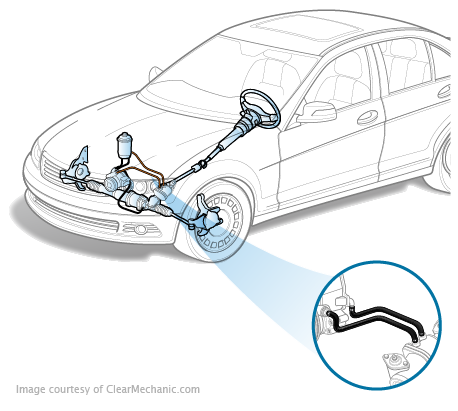Blog

What Causes Hose(s) to Leak?
While the biggest piece of your motor is mechanical, power through pressure assumes a critical part. You'll discover liquids at work in various diverse regions.
Engine oil
Transmission fluid
Coolant
Power steering fluid
Brake fluid
Washer fluid
These liquids must be transported starting with one place then onto the next keeping in mind the end goal to carry out their occupation. While a few liquids run fundamentally inside the motor or another part (oil, for example, or transmission liquid), others don't. Consider motor coolant – it's put away in your radiator and flood tank/store, however should move from that point to the motor and afterwards back once more. Power controlling liquid is another prime illustration – it must be moved from the power guiding liquid store at the pump, into the rack and after that recycled again. Moving liquid starting with one zone then onto the next requires hoses, and hoses are inclined to wear and tear. They'll in the long run rot and should be supplanted.
Hose spills are caused by various diverse variables. The essential one is warm. Hoses in the motor straight are presented to high temperatures all the time, both all around. For instance, coolant hoses must manage warm from the motor, and also warm from the coolant itself.
While exceptionally strong, elastic (the essential material for all hoses) degrades. Presentation to high temperatures makes the elastic dry out. As it dries, it ends up plainly weak. On the off chance that you've at any point crushed a well used out hose, you've felt the "smash" of dry elastic. Weak elastic doesn't do well with weight or warm, and will in the end tear, tear or if nothing else rot to the point that you have a pinhole spill with liquid showering out.
Another cause is contact with a hot or sharp surface. The wrong size hose, or one that has been crimped into an off base position, may contact sharp or exceptionally hot surfaces in the motor straight. Sharp zones will wear away at the hose, basically slicing through the elastic (fuelled by vibrations from a running motor). Hot surfaces can liquefy elastic.
At long last, when you consolidate weight with warm presentation, you have a formula for spilling. A large portion of the hoses in your motor convey pressurized liquid, including hot coolant, pressurized control guiding liquid, and pressurized brake liquid. All things considered, water driven frameworks work since liquid is pressurized. That weight works inside the hose, and if a frail spot creates, it will punch through, making a hole. Hose leaks may have nothing to do with the hoses at all. If the leak is located at an end, the problem may actually be the clamp securing the hose to the nipple or inlet. A loose clamp can cause a very serious leak without any damage necessary to the hose.
Posted on June 2017,20 // Author: Admin